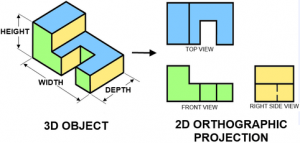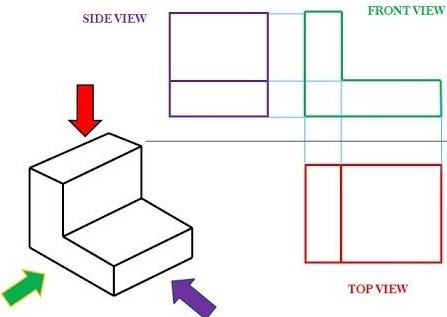The creation of an institution, designed to gather all of the information in the world and make it available to everyone who needs it pre-dates Google by 2200 years!
The city of Alexandria was founded by Alexander The Great in April 331 BCE after his army had captured the Egyptian Satrapy from the Persians. He wanted to build a large Greek city on Egypt’s coast with good fresh water and a harbour. Under his direction, Alexandria became the world’s first planned city with streets laid out in a grid and many other features still used in urban design.
Following the death of Alexander in 323 BCE, there was a power grab for his empire among his top-ranking officers and the Ptolemies gained control of Egypt, and made Alexandria their capital. They reigned as Pharaohs until Cleopatra’s death during the Roman era. Within the city, the Great Library of Alexandria, was to become one of the largest and most significant libraries of the ancient world. Situated in the Royal Quarter near the harbour, it formed part of a larger research institution called the Mouseion, which was dedicated to the Muses, the nine goddesses of the arts. This was not the first library of its kind. A long tradition of libraries existed in both Greece and the ancient Near East. The earliest recorded archive of written materials comes from the Sumerian city-state of Uruk in around 3400 BCE, and there were other famous libraries in existence in Babylon and Greece. However, the Great Library would grow to outshine all of these.
The Great Library was most likely founded by Ptolemy I sometime before 283 BCE, but does not appear to have been completed until the reign of Ptolemy II (283–246 BCE). The Ptolemaic rulers intended the Great Library to be a collection of all knowledge, and worked for more than a century to expand the Library’s collections through an aggressive and well-funded policy of book purchasing, and plunder. Any books found on ships that came into port were taken to the library, where they were copied by official scribes. The original texts were kept in the library, and the copies delivered to the owners.
The Mouseion which housed the Great Library also served as home to a host of international scholars, poets, philosophers, and researchers, who the Ptolemies provided with a large salary, free food and lodging, and exemption from taxes. There were numerous classrooms, where the scholars were expected to at least occasionally teach students. The Roman period, particularly after the Christianization of the Empire in the 1st century CE, saw the decline and eventual destruction of this institution.
While the concept of a library is debated, it is certainly more than just a collection of books – ‘any number of books brought together in one place, no more, of itself, constitutes a library than a pile of bricks can be called a house’. Academics generally agree a library needs purpose, organization, and maintenance of its collection (all of which apply to the Great Library), but the sheer size of the Great Library collection posed some unique problems.
First, within half a century of its foundation circa 295 BCE, the collections of the Royal Library had exceeded the space allotted to contain the accumulated books. To that end, Ptolemy III (246–221 BCE) established an offshoot that could house the surplus volumes in the newly built Serapeum, a temple dedicated to the worship of the Greco-Egyptian god Serapis, situated in the Egyptian district south of the city. Unlike the layout of the Mouseion, of which no records remain, a surprising amount of this temple has survived allowing us an insight as to how it looked and functioned.
This outer library was open to everyone and the medieval text of John Tzetzes suggests there were “42,000 books in this outer library”, mainly duplicates, and lower quality scrolls. There was free access to this collection, people of the city and visitors could take scrolls to read, or attend public readings if they were illiterate.
Second, making information freely available is one thing, being able to find that information is altogether a more complex undertaking. In addition to the outer library, the inner (Royal) Library is said to have held another 400,000 mixed books, plus 90,000 unmixed books. But, how could scholars navigate this vast collection in order to use it in any sort of efficient way? Finding the information you needed requires a system.
The starting point was assigning texts to different rooms based on their subject matter. The first Librarian, Zenodotus made an inventory of the Library’s holdings, which he then organized into three major categories:
- The first category included history books, edited and standardized literary works, and new works of Ptolemaic literature.
- The second included holdings used for comparison and in the creation of the standardized works mentioned above. Included in this category were also letters and maps.
- The third group comprised original writings in foreign languages, many of which had been translated into Greek, and which, in translation were included in the first group.
Within each of these divisions he then organized the works alphabetically by the first letter of the name of their author. This was one of the first uses of the principle of alphabetic organization. To maintain the collection, library staff then attached a small dangling tag to the end of each scroll, which contained information on each work’s author, title, and its subject, so that materials could be easily returned to the area in which they had been classified, but this also meant that library users did not have to unroll each scroll in order to see what it contained. This was the first recorded use of metadata, another landmark in library history.
Zenodotus’ methods overlaid an ordering principle on the entire collection of the Great Library which continues to be applied in libraries through to the current times. But, as the collection grew a more detailed structure was needed. This was implemented by Callimachus of Cyrene; he divided the collection into the main realms of literature as generally agreed at the time. Then within each of these divisions, he shelved all the authors in alphabetical order by the first letter of their name. This scheme is a classic taxonomy, Aristotle (384-322 BCE) is often credited as the first great taxonomist and his ideas may have been influential in the design of the system.
This approach took care of the shelving principle, but Callimachus went a step further. As a finding aid, he produced the pinakes, or “Tables of Persons Eminent in Every Branch of Learning Together with a List of Their Writings”. While the entire one hundred twenty scrolls of the pinakes have not survived to this day, the pieces of it that have survived show this was one of the first known documents that lists, identifies, and categorizes a library’s holdings. Within the pinakes, Callimachus listed works alphabetically by author and genre then added metadata in the form of a short biographical note on each author, which prefaced that author’s entry within his catalogue and sometimes a summary of the scroll’s contents.
How great was the influence of the Great Library of Alexandria on the development of knowledge is hard to define, it was probably significant. What we do know is the systems used to lay out the library, and classify the documents carry through to modern times and the next level of detail, indexing the contents of books did not occur until the 13th century CE.
The advantages and disadvantages of the free-form Google search over the structure of a well designed taxonomy, and an annotated catalogue are the search will look at ‘everything’, but the list of documents produced has had no vetting for quality, accuracy or relevance. When managing knowledge, more is not necessarily better.
For more on indexing and library classification system download Finding Information – The art of Indexing from: https://mosaicprojects.com.au/PMKI-ZSY-010.php#Process1
At a more practical level, Mosaic’s Project Management Knowledge Index (PMKI) is a taxonomy of project management papers and articles. The Taxonomy is available to download, use and adapt as well as the articles, papers and reference materials: https://mosaicprojects.com.au/PMKI.php











